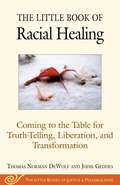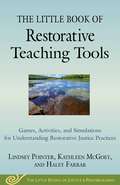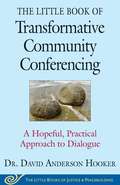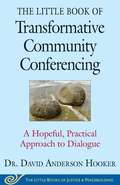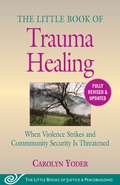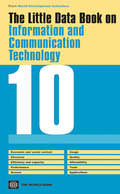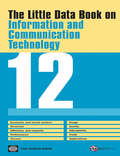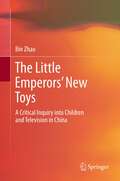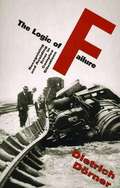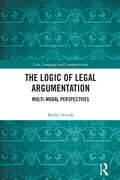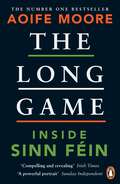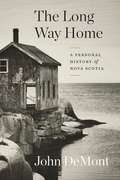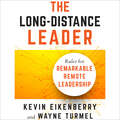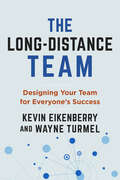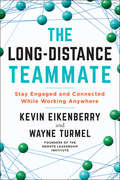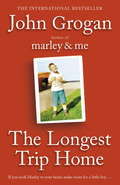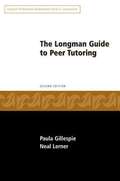- Table View
- List View
The Little Book of Police Youth Dialogue: A Restorative Path Toward Justice (Justice and Peacebuilding)
by Dr. Micah E. Johnson Jeffrey WeisbergDiscover the police-youth dialogue (PYD) as a method to build trustworthiness, mend relationships, and heal historical harms between black youth and law enforcement. This timely book from the Justice and Peacebuilding series offers an explanation of the need for meaningful dialogue between law enforcement and black youth, a blueprint for implementing police-youth dialogues, best practices and examples, anecdotes and narratives from participants, different models and formats, potholes and limitations, and tangible tools and action steps for starting a police-youth dialogue program. Ultimately, the strategies and techniques used in effective police-youth dialogues can bring attention to issues of implicit bias and the impact of toxic stress on marginalized groups, ameliorate tensions between law enforcement officers and black youth, and build toward a model of community policing and restorative justice rather than punitive discipline and violence.The Little Book of Police-Youth Dialogue presents readers with relevant knowledge and research regarding trauma and race in the United States, strategies for creating a safe space of attentive listening and mediating genuine connections between police officers and black youth, and specific ways to take action in ameliorating police-youth tensions and promoting healing in their local communities.
The Little Book of Racial Healing: Coming to the Table for Truth-Telling, Liberation, and Transformation (The Little Books of Justice and Peacebui #1)
by Thomas Norman Dewolfe Geddes JodiePeople of color, relative to white people, fall on the negative side of virtually all measurable social indicators. The “living wound” is seen in the significant disparities in average household wealth, unemployment and poverty rates, infant mortality rates, access to healthcare and life expectancy, education, housing, and treatment within, and by, the criminal justice system. Coming to the Table (CTTT) was born in 2006 when two dozen descendants from both sides of the system of enslavement gathered together at Eastern Mennonite University (EMU), in collaboration with the Center for Justice & Peacebuilding (CJP). Stories were shared and friendships began. The participants began to envision a more connected and truthful world that would address the unresolved and persistent effects of the historic institution of slavery. This Little Book shares Coming to the Table’s vision for the United States—a vision of a just and truthful society that acknowledges and seeks to heal from the racial wounds of the past. Readers will learn practical skills for better listening; discover tips for building authentic, accountable relationships; and will find specific and varied ideas for taking action.
The Little Book of Restorative Justice for Colleges and Universities, Second Edition: Repairing Harm and Rebuilding Trust in Response to Student Misconduct (Justice and Peacebuilding)
by David R. KarpA Practitioner's Reference and Guide to Implement Restorative Justice on CampusHere’s a call to colleges and universities to consider implementing restorative practices on their campuses, ensuring fair treatment of students and staff while minimizing institutional liability, protecting the campus community, and boosting morale, from an associate dean of student affairs who has put these models to work on his campus.Restorative justice is a collaborative decision-making process that includes victims, offenders, and others who are seeking to hold offenders accountable by having them (a) accept and acknowledge responsibility for their offenses, (b) to the best of their ability, repair the harm they caused to victims and communities, and (c) work to reduce the risk of re-offense by building positive social ties to the community. David Karp writes in his introduction, “As a student affairs administrator, I have become deeply committed to the concept and practice of restorative justice. I have experienced how it can work given the very real pressures among campus conduct administrators to manage high case loads, ensure fair treatment, minimize institutional liability, protect the campus community, boost morale in a division with high turnover, and help students learn from their mistakes without creating insurmountable obstacles to their future successes.”
The Little Book of Restorative Justice for Older Adults: Finding Solutions to the Challenges of an Aging Population (Justice and Peacebuilding)
by Julie Friesen Wendy MeekExploring Restorative Justice Practices as a Compelling Response to the Challenges of an Aging Population As our global population ages, conflicts and difficult conversations emerge. How will older adults decide who will make end-of-life health and financial decisions for them? When will dad need to move out of his home and into long-term care? We can’t have mom living with us anymore because it’s just too hard. Why are my children fighting over where I will live? Why is my son taking money from me? These are challenging scenarios that ever-increasing numbers of people are facing. Sometimes these difficulties are discussed in catastrophic terms:Untenable health-care costs Exhausted pension funds Crises in home-care and long-term housing And other concerns Certainly, there are some reasons to worry; however, the challenges facing older adults can be an opportunity for positive change. The Little Book of Restorative Justice for Older Adults is about providing safe and respectful processes to assist in resolving conflict and addressing abuse involving older adults, families, caregivers, and communities. Authors Julie Friesen and Wendy Meek explore ideas to help connect and support people, building on the strengths and capacities of older adults and their families, in order to strengthen communities. Restorative justice dialogues help older adults and their families talk constructively and safely to find ways to move forward together.
The Little Book of Restorative Teaching Tools: Games, Activities, and Simulations for Understanding Restorative Justice Practices (Justice and Peacebuilding)
by Lindsey Pointer Kathleen McGoey Haley FarrarEngaging Practices for Integrating Restorative Justice Principles in Group Settings As restorative practices spread around the world, scholars and practitioners have begun to ask very important questions: How should restorative practices be taught? What educational structures and methods are in alignment with restorative values and principles? This book introduces games as an effective and dynamic tool to teach restorative justice practices. Grounded in an understanding of restorative pedagogy and experiential learning strategies, the games included in this book provide a way for learners to experience and more deeply understand restorative practices while building relationships and improving skills. Chapters cover topics such as:Introduction to restorative pedagogy and experiential learningHow a restorative learning community can be built and strengthened through the use of games and activitiesHow to design games and activities for teaching restorative practicesHow to design, deliver, and debrief an activity-based learning experienceIn-depth instructions for games and activities for building relationships, understanding the restorative philosophy, and developing skills in practiceAn ideal handbook for educators, restorative justice program directors and trainers, consultants, community group leaders, and anyone else whose work draws people together to resolve disagreements or address harm, this book will serve as a catalyst for greater creativity and philosophical alignment in the teaching of restorative practices across contexts.
The Little Book of Transformative Community Conferencing: A Hopeful, Practical Approach to Dialogue
by David Anderson HookerWhen conflicts become ingrained in communities, people lose hope. Dialogue is necessary but never sufficient, and often actions prove inadequate to produce substantial change. Even worse, chosen actions create more conflict because people have different lived experiences, priorities, and approaches to transformation. The Little Book Transformative Community Conferencing will be valuable to mediators, restorative justice practitioners, community organizers, as well as leaders of peacebuilding and change efforts. It presents an important addition to the study and practice of strategic peacebuilding, restorative justice, conflict transformation, trauma healing, and community organizing.
The Little Book of Transformative Community Conferencing: A Hopeful, Practical Approach to Dialogue (Justice and Peacebuilding)
by David Anderson HookerWhen conflicts become ingrained in communities, people lose hope. Dialogue is necessary but never sufficient, and often actions prove inadequate to produce substantial change. Even worse, chosen actions create more conflict because people have different lived experiences, priorities, and approaches to transformation. So what’s the story?In The Little Book of Transformative Community Conferencing, David Anderson Hooker offers a hopeful, accessible approach to dialogue that:Integrates several practice approaches including restorative justice, peacebuilding, and artsCreates welcoming, non-divisive spaces for dialogueNames and maps complex conflicts, such as racial tensions, religious divisions, environmental issues, and community development as it narrates simple storiesBuilds relationships and foundations for trust needed to support long-term community transformation projectsAnd results in the crafting of hopeful, future-oriented visions of community that can transform relationships, resource allocation, and structures in service of communities’ preferred narratives.The Little Book Transformative Community Conferencing will prove valuable and timely to mediators, restorative justice practitioners, community organizers, as well as leaders of peacebuilding and change efforts. It presents an important, stand-alone process, an excellent addition to the study and practice of strategic peacebuilding, restorative justice, conflict transformation, trauma healing, and community organizing.This book recognizes the complexity of conflict, choosing long-term solutions over inadequate quick fixes. The Transformative Community Conferencing model emerges from the author’s thirty years of practice in contexts as diverse as South Sudan; Mississippi; Greensboro, North Carolina; Oakland, California; and Nassau, Bahamas.
The Little Book of Trauma Healing: When Violence Strikes and Community Security Is Threatened (Justice and Peacebuilding)
by Carolyn YoderHow do we address trauma, interrupt cycles of violence, and build resilience in a turbulent world of endless wars, nationalism, othering, climate crisis, racism, pandemics, and terrorism? This fully updated edition offers a practical framework, processes, and useful insights.The traumas of our world go beyond individual or one-time events. They are collective, ongoing, and the legacy of historical injustices. How do we stay awake rather than numbing or responding violently? How do we cultivate individual and collective courage and resilience? This Little Book provides a justice-and-conflict-informed community approach to addressing trauma in nonviolent, neurobiologically sound ways that interrupt cycles of violence and meet basic human needs for justice and security. In these pages, you&’ll find the core framework and tools of the internationally acclaimed Strategies for Trauma Awareness and Resilience (STAR) program developed at Eastern Mennonite University&’s Center for Justice and Peacebuilding in response to 9/11. A startlingly helpful approach.
The Little Book on Legal Writing
by Alan L. DworskyThis book is geared to the kind of writing first-year law students do in a standard legal writing course: memorandums and briefs. However, almost all the advice given applies to other kinds of legal writing as well, such as contracts and pleadings. In fact, much of the advice applies to nonfiction writing in general, because good legal writing is simply good writing. Each subject is broken down into simple, concise sections, making The Little Book on Legal Writing an excellent title for any professor s legal writing course.
The Little Data Book on Information and Communication Technology 2010
by World BankThis Little Data Book presents at-a-glance tables for over 140 economies showing the most recent national data on key indicators of information and communications technology (ICT), including access, quality, affordability, efficiency,sustainability, and applications.
The Little Data Book on Information and Communication Technology, 2012
by The World BankThis Little Data Book presents tables for over 213 economies showing the most recent national data on key indicators of information and communications technology (ICT), including access, quality, affordability, efficiency,sustainability, and applications.
The Little Emperors’ New Toys
by Bin ZhaoDrawing on original research I conducted in the late 1980s, the book argues for a critical approach to the study of children and television. It begins with critical reappraisals of previous empiricist and interpretative studies to set the ground for a different theoretical inquiry which links biography with history. The situated activity of children's television viewing therefore has to be related to the broader historical and cultural formations in post-Mao China. By way of a methodological pluralism of questionnaire survey, in-depth interviews and observation, the book provides the reader with a thorough critical analysis of the rise of the new commercial ethic in Chinese society in general, and in the sector of media and communications in particular, at the very historical turning point of the late 1980s. Soon after that, Deng Xiaoping made his significant tour to south China, reckoning a big step forward towards further liberalization and started to form a brave new world in China ever since.
The Little Magazine in Contemporary America
by Ian Morris Joanne DiazLittle magazines have often showcased the best new writing in America. Historically, these idiosyncratic, small-circulation outlets have served the dual functions of representing the avant-garde of literary expression while also helping many emerging writers become established authors. Although changing technology and the increasingly harsh financial realities of publishing over the past three decades would seem to have pushed little magazines to the brink of extinction, their story is far more complicated. In this collection, Ian Morris and Joanne Diaz gather the reflections of twenty-three prominent editors whose little magazines have flourished over the past thirty-five years. Highlighting the creativity and innovation driving this diverse and still vital medium, contributors offer insights into how their publications sometimes succeeded, sometimes reluctantly folded, but mostly how they evolved and persevered. Other topics discussed include the role of little magazines in promoting the work and concerns of minority and women writers, the place of universities in supporting and shaping little magazines, and the online and offline future of these publications. Selected contributors Betsy Sussler, BOMB; Lee Gutkind, Creative Nonfiction; Bruce Andrews, L=A=N=G=U=A=G=E; Dave Eggers, McSweeney’s; Keith Gessen, n+1; Don Share, Poetry; Jane Friedman, VQR; Amy Hoffman, Women’s Review of Books; and more.
The Logic of Connective Action
by W. Lance Bennett Alexandra SegerbergThe Logic of Connective Action explains the rise of a personalized digitally networked politics in which diverse individuals address the common problems of our times such as economic fairness and climate change. Rich case studies from the United States, United Kingdom, and Germany illustrate a theoretical framework for understanding how large-scale connective action is coordinated using inclusive discourses such as "We Are the 99%" that travel easily through social media. In many of these mobilizations, communication operates as an organizational process that may replace or supplement familiar forms of collective action based on organizational resource mobilization, leadership, and collective action framing. In some cases, connective action emerges from crowds that shun leaders, as when Occupy protesters created media networks to channel resources and create loose ties among dispersed physical groups. In other cases, conventional political organizations deploy personalized communication logics to enable large-scale engagement with a variety of political causes. The Logic of Connective Action shows how power is organized in communication-based networks, and what political outcomes may result.
The Logic of Failure: Recognizing and Avoiding Error in Complex Situations
by Dietrich DornerWhy do we make mistakes? Are there certain errors common to failure, whether in a complex enterprise or daily life? In this truly indispensable book, Dietrich Dörner identifies what he calls the “logic of failure”—certain tendencies in our patterns of thought that, while appropriate to an older, simpler world, prove disastrous for the complex world we live in now. Working with imaginative and often hilarious computer simulations, he analyzes the roots of catastrophe, showing city planners in the very act of creating gridlock and disaster, or public health authorities setting the scene for starvation. The Logic of Failure is a compass for intelligent planning and decision-making that can sharpen the skills of managers, policymakers and everyone involved in the daily challenge of getting from point A to point B.
The Logic of Legal Argumentation: Multi-Modal Perspectives (Law, Language and Communication)
by Marko NovakMulti-modal argumentation with its logical, emotional, visceral and kisceral arguments is an important addition to logical argumentation, especially when real-life situations are considered. It does not discard logic but adds other modes of argumentation to complement it, to emphasize the realistic environments of communication. In this sense, the multi-modal theory is important for the area of legal argumentation, where even in the reasoning of judicial decisions traces of a flesh-and-blood personality, who decided the case and wrote the reasons, can be found. This book presents a comprehensive analysis of this informal logic in legal argumentation and its practicality within the law. It argues that by building on the dialectical and rhetorical models of legal argument, the former being important for clear cases while the latter for unclear ones, the multi-modal theory of legal argumentation brings together logic and psychology in a holistic or integral perspective. The approach is not only descriptive, identifying the traces of alternate arguments in judicial decisions, but is also normative, presenting the criteria for evaluation that multi-modal arguments need to face to attain validity in the legal context. The work will be of interest to academics and researchers in the areas of Legal Theory, Legal Linguistics, Philosophy of Law, and Communication Studies.
The Long Game: Inside Sinn Féin
by Aoife MooreInside the rise of the political party, once subordinate to the IRA, that is on the brink of taking power in Ireland Sinn Féin, long widely-regarded as the political wing of the Provisional IRA, is the most popular political party in both Northern Ireland and the Republic. A movement once synonymous with a paramilitary campaign is on the brink of taking real power through purely democratic means. But if Sinn Féin has mastered the art of electoral politics, it remains strangely opaque. Who really runs the party? How is it funded? And what can we expect of it as a party of government?Aoife Moore, Irish Journalist of the Year 2021. explores these and other burning questions in The Long Game. Drawing on exclusive interviews with current and former members of Sinn Féin, she builds up a picture of a party undergoing a profound, and still incomplete, transformation. She looks at the key individuals and moments that put the party on its present course, and she explores tensions within the party and the wider republican movement.Packed with revelatory details, The Long Game is a groundbreaking telling of contemporary Ireland's biggest and most elusive political story.
The Long Way Home: A Personal History of Nova Scotia
by John DemontThe province's premier journalist tells the story he was born to write.No journalist has travelled the back roads, hidden vales and fog-soaked coves of Nova Scotia as widely as John DeMont. No writer has spent as much time considering its peculiar warp and weft of humanity, geography and history. The Long Way Home is the summation of DeMont's years of travel, research and thought. It tells the story of what is, from the European view of things, the oldest part of Canada. Before Confederation it was also the richest, but now Nova Scotia is among the poorest. Its defining myths and stories are mostly about loss and sheer determination. Equal parts narrative, memoir and meditation, The Long Way Home chronicles with enthralling clarity a complex and multi-dimensional story: the overwhelming of the first peoples and the arrival of a mélange of pioneers who carved out pockets of the wilderness; the random acts and unexplained mysteries; the shameful achievements and noble failures; the rapture and misery; the twists of destiny and the cold-heartedness of fate. This is the biography of a place that has been hardened by history. A place full of reminders of how great a province it has been and how great—with the right circumstances and a little luck—it could be again.
The Long Year: A 2020 Reader (Public Books Series)
by Eric Klinenberg Joan Wallach Scott Julie Livingston Natalia Molina Jun Li Guobin Yang Andrew Lakoff Priscilla Wald Warwick Anderson Warren Breckman Adam Tooze Ananya Roy Sophie Lewis Neha Vora Margaret O'Mara Yarimar Bonilla Merlin Chowkwanyun Keeanga-Yamahtta Taylor Margaret Morganroth Gullette Marcia Chatelain Jacob A.C. Remes Joanne Randa Nucho Xiaowei Wang Miguel Centeno Jean-Paul Gagnon Keisha N. Blain Sulfikar Amir Mustafa Dikeç David Schmidt Gautam Bhan David S. Barnes Isabelle Guérin Andy Horowitz Simon Balto Éric Charmes Max Rousseau Michelle Cera Gilles Guiheux Ye Guo Renyou Hou Manon Laurent Anne-Valérie Ruinet Govindan Venkatasubramanian Mathieu Ferry Marine Al Dahdah Sherihan Radi Jeffrey Aaron Snyder Rachel Nolan Evan Lieberman Julia Foulkes Soledad Álvarez Velasco Sophie Gonick Alfonso Fierro Erick Corrêa Gianpaolo Biaocchi Jake Carlson Quentin Ravelli Rikki J. Dean Afsoun Afsahi Emily Beausoleil Selen A. Ercan Cordula Dittmer Daniel F. Lorenz Kathryn Cai Kavita SivaramakrishnanSome years—1789, 1929, 1989—change the world suddenly. Or do they? In 2020, a pandemic converged with an economic collapse, inequalities exploded, and institutions weakened. Yet these crises sprang not from new risks but from known dangers. The world—like many patients—met 2020 with a host of preexisting conditions, which together tilted the odds toward disaster. Perhaps 2020 wasn’t the year the world changed; perhaps it was simply the moment the world finally understood its deadly diagnosis.In The Long Year, some of the world’s most incisive thinkers excavate 2020’s buried crises, revealing how they must be confronted in order to achieve a more equal future. Keeanga-Yamahtta Taylor calls for the defunding of police and the refunding of communities; Keisha Blain demonstrates why the battle against racism must be global; and Adam Tooze reveals that COVID-19 hit hardest where inequality was already greatest and welfare states weakest. Yarimar Bonilla, Xiaowei Wang, Simon Balto, Marcia Chatelain, Gautam Bhan, Ananya Roy, and others offer insights from the factory farms of China to the elite resorts of France, the meatpacking plants of the Midwest to the overcrowded hospitals of India.The definitive guide to these ongoing catastrophes, The Long Year shows that only by exposing the roots and ramifications of 2020 can another such breakdown be prevented. It is made possible through institutional partnerships with Public Books and the Social Science Research Council.
The Long-Distance Leader: Rules for Remarkable Remote Leadership
by Kevin Eikenberry Wayne TurmelLeadership first, location secondAs more organizations adopt a remote workforce, the challenges of leading at a distance become more urgent than ever. The cofounders of the Remote Leadership Institute, Kevin Eikenberry and Wayne Turmel, show leaders how to guide their teams by recalling the foundational principles of leadership. The authors' &“Three-O&” Model refocuses leaders to think about outcomes, others, and ourselves—elements of leadership that remain unchanged, whether employees are down the hall or halfway around the world. By pairing it with the Remote Leadership Model, which emphasizes using technology as a tool and not a distraction, leaders are now able to navigate the terrain of managing teams wherever they are. Filled with exercises that ensure projects stay on track, keep productivity and morale high, and build lasting relationships, this bookis the go-to guide for leading, no matter where people work.
The Long-Distance Team: Designing Your Team for Everyone's Success (The Long-Distance Worklife Series)
by Kevin Eikenberry Wayne TurmelDesign and cultivate remote work teams that actually work.From the experts who brought you The Long-Distance Leader and The Long-Distance Teammate comes the proven and practical guide for leaders to consciously design teams, define and create their desired culture, and encourage and nurture employee engagement-all from a distance. Team design and culture are often presented as separate concepts when they are in fact intertwined in the remote work setting. Using the 3C model of communication, collaboration, and cohesion, leaders will be given the tools to overcome challenges, such as proximity bias and deteriorating social connections, to create an environment where everyone can contribute and add value equally, regardless of location. The 3Cs are Communication-While communication is a fundamental part of being human, it is also a critical foundation of successful work. Without it, teams break down. Collaboration-Remote leaders face the misguided belief that physical presence is required to have a collaborative team. The truth is that proximity has nothing to do with successful collaboration. Cohesion-This dimension includes decidedly nonstructural aspects, such as relationships, trust, and accountability. While difficult to measure, a team's cohesion is critical to its success. Using this framework, leaders of all levels will learn to assess, design, and develop their communication channels, methods for remote collaboration, and ability to foster cohesion to build successful long-distance teams. While a hybrid culture will be different, it can, when done right, be better than what existed before.
The Long-Distance Teammate: Stay Engaged and Connected While Working Anywhere (The Long-Distance Worklife Series)
by Kevin Eikenberry Wayne TurmelWhat does it mean to "go to work" when you don't actually leave the house? This is the ultimate guide for remote workers who want to stay engaged as team members, maintain robust work relationships, and keep an eye on their long-term career goals. Even before the coronavirus hit, remote work was growing at nearly 30 percent per year, and now it's just a fact of life. There are many millions of people who once worked at a central location every day who now find themselves facing an entirely new way of working. Written by the founders of the Remote Leadership Institute, this book is the most authoritative single resource for helping remote workers get work done effectively, build relationships that are both productive and satisfying, and maintain a career trajectory when they are not in constant close contact with their leader, coworkers, or the organization in general.The Long-Distance Teammate tackles three important issues: navigating the personal and interpersonal, growing the skills to be productive, and communicating effectively—all from a distance. In short, there is a big difference between working at home and being an effective member of a team. This practical guide describes that difference and allows you to be a great remote teammate.
The Longest Trip Home: A Memoir
by John GroganAutobiography of the author of "Marley and Me", about his Catholic upbringing outside Detroit in the 60s and 70s, a book about mortality and grace, spirit and faith, and the powerful love of family.
The Longest Trip Home: A Memoir
by John GroganFollowing the phenomenal success of MARLEY & ME, John Grogan’s memoir is a warm and moving tribute to the power of family and love which will delight John’s fans and has all the ingredients to become the same word-of-mouth bestseller.
The Longman Guide to Peer Tutoring
by Paula Gillespie Neal LernerGrounded in current writing center theory and practice, The Guide to Peer Tutoring provides students with a comprehensive introduction to effective tutoring. Throughout the book, readers hear the voices of tutors and writers in first-person peer tutor accounts, reflective essays, and transcripts from actual sessions. Within each chapter, techniques, models, and exercises provide instruction appropriate for any level of tutoring.

